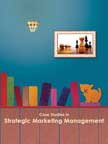Marketing Communications
 |
Details
Textbook:
Pages : 370; Paperback;
210 X 275 mm approx.
Suggested Case Studies
Workbook:
Pages :
299; Paperback;
210 X 275 mm approx, Sample Applied Theory Questions
Pricing
Textbook Price: Rs. 750;
Workbook Price: Rs. 700;
Available only in INDIA
Buy Now
Please allow 5 to 10 days for delivery.
Detail Table of Contents
Marketing Communications Budgeting : Chapter 17
SUMMARY: In this chapter, we studied marketing communications budgeting. The growing importance of communications budgeting can be attributed to increasing media costs, rise in competition and the increased focus of top management on productivity in a company's operations. Moreover, the marketing communications budget is the first area to be reconsidered by the top management during trying times, to save costs. This has put a great deal of pressure on managers to maximize the effectiveness of the communication spending a company undertakes. In this chapter, we first understood the relationship between communications spending and sales. The key factors that influence the relationship between communications spending and sales are marketing communication goals, threshold effects, cumulative effects, diminishing returns effects and negative returns effects. Later, we examined the budgeting methods that |
|
are widely adopted by companies. Two types of methods can be followed for fixing communication budgets.
Judgment oriented methods and data-oriented methods. Prominent judgment oriented methods are arbitrary method, affordable budgeting method, and percentage-to-sales method. Prominent data-oriented methods are competitive parity method, objective-to-task method, and payout planning method.



